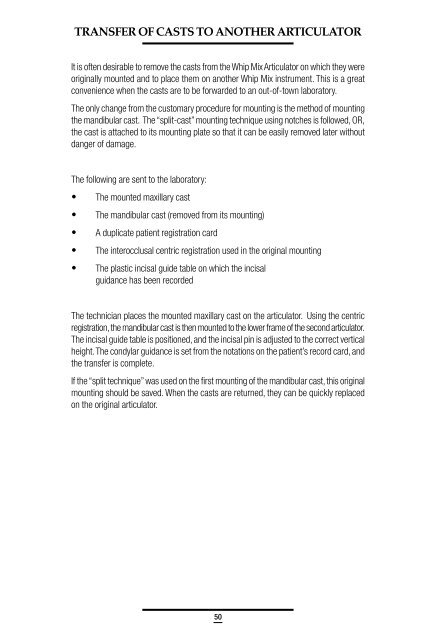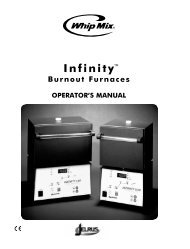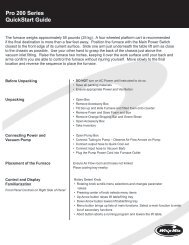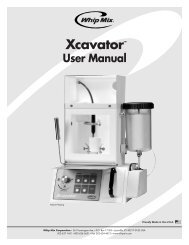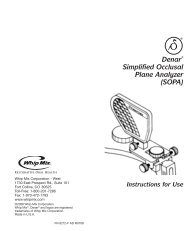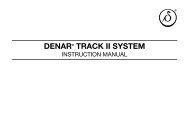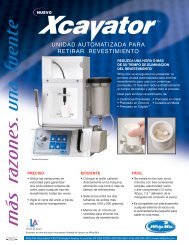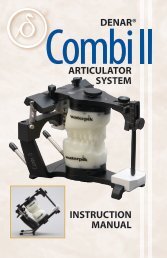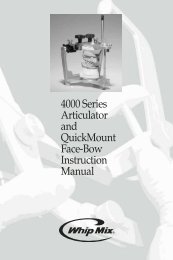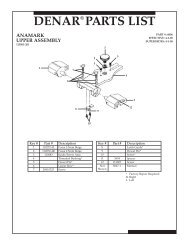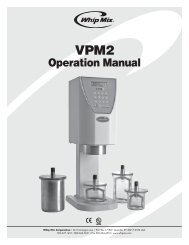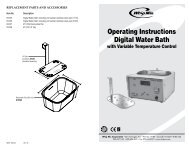14238 2000 Articulator_BW - Whip Mix
14238 2000 Articulator_BW - Whip Mix
14238 2000 Articulator_BW - Whip Mix
You also want an ePaper? Increase the reach of your titles
YUMPU automatically turns print PDFs into web optimized ePapers that Google loves.
TRANSFER OF CASTS TO ANOTHER ARTICULATORIt is often desirable to remove the casts from the <strong>Whip</strong> <strong>Mix</strong> <strong>Articulator</strong> on which they wereoriginally mounted and to place them on another <strong>Whip</strong> <strong>Mix</strong> instrument. This is a greatconvenience when the casts are to be forwarded to an out-of-town laboratory.The only change from the customary procedure for mounting is the method of mountingthe mandibular cast. The “split-cast” mounting technique using notches is followed, OR,the cast is attached to its mounting plate so that it can be easily removed later withoutdanger of damage.The following are sent to the laboratory:• The mounted maxillary cast• The mandibular cast (removed from its mounting)• A duplicate patient registration card• The interocclusal centric registration used in the original mounting• The plastic incisal guide table on which the incisalguidance has been recordedThe technician places the mounted maxillary cast on the articulator. Using the centricregistration, the mandibular cast is then mounted to the lower frame of the second articulator.The incisal guide table is positioned, and the incisal pin is adjusted to the correct verticalheight. The condylar guidance is set from the notations on the patient’s record card, andthe transfer is complete.If the “split technique” was used on the first mounting of the mandibular cast, this originalmounting should be saved. When the casts are returned, they can be quickly replacedon the original articulator.50


